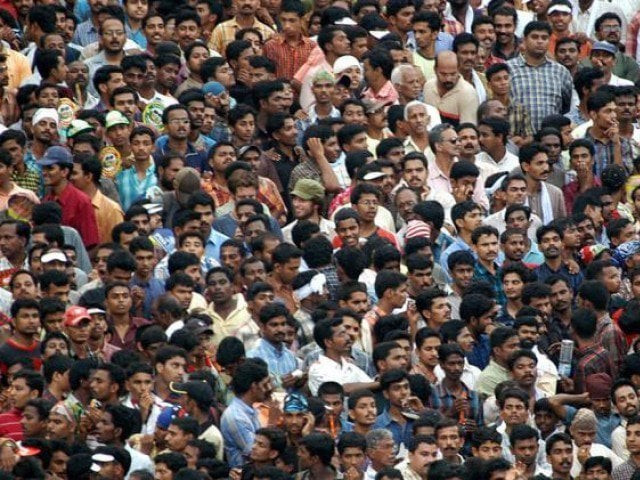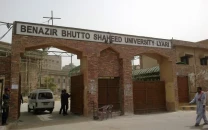Census to begin in lower Sindh on March 15
This will be first phase, after which second phase will be held in upper Sindh

PHOTO: EXPRESS
During a meeting on Monday, officials informed the chief minister that the first phase will cover lower Sindh, including the Karachi, Hyderabad and Mirpurkhas divisions, after which the second phase will be carried out in Sukkur, Larkana and Benazirabad divisions.
“In each phase, three days have been fixed for house listing and 10 days for census by acquiring the information about family members in a house,” provincial census commissioner Aleem Memon told The Express Tribune. “One day has been fixed for homeless people. It means this process will be finished in 14 days in each division but each phase will be completed within a month because of other documents’ requirement and verification.”
According to officials, the process will be carried out under the security cover of the army. The meeting was informed that the first phase will start simultaneously in each province while the second phase will start after 10 days of the completion of the first. Two blocks will be covered by one enumerator in each phase and one soldier will accompany each enumerator. The enumerators and supervisors will be from the education, local government, social welfare and revenue departments.
About time: ‘Sindh is ready for a census’
“In this process, the [CNIC] ID card is a must for the head of the family, otherwise the house or family will not be counted,” said sources requesting anonymity. They added that the government has decided to approach the federal government to mobilise special teams of NADRA to issue CNICs in the rural areas of the province for the forthcoming housing census.
District breakdown
Briefing about the administrative arrangement, the officials in the Pakistan Bureau of Statistics said that a district will be called ‘census district’, which will comprise blocks, census circles and census charge. Each block in urban or rural areas comprises 200 to 250 houses while a census circle will have five to seven blocks or 1,500 houses on an average. Meanwhile, the census charge will comprise five to seven census circles. “Only two forms have been designated in this process,” said an official. “Form-I is for household listing operation and form-II is for collection of individual information on housing characteristics.”
According to a presentation given to the chief minister, there will be 931 census charges, 5,120 circles, 38,634 blocks and 44,685 census areas in Sindh. For this, around 27,905 staff members, including 19,317 enumerators, 5,120 supervisors and 931 superintendents, will be deployed to conduct the census. The enumeration process will be collected and recoded on questionnaires by the enumerator through door-to-door visits. All the people residing in the country, except diplomats and refugees living in camps, will be counted in this process.
According to officials, the deputy commissioner of the district will work as census district officer.
For Karachi, an official said that around 10,146 staff are required, of which 7,118 will be enumerators and 3,028 supervisors, to cover 14,235 blocks, 2,389 circles and 364 census charges.
Population count: NADRA records cannot substitute for census, says Ravi Pinjani
Meanwhile, the Sindh government has formed coordination committees at provincial and divisional levels. The chief secretary will head the provincial committee while commissioners and deputy commissioners of the respective districts will be chairmen of the committees to review the progress of census activities on a daily basis and initiate appropriate action in case of any bottleneck.
Census history
So far, five censuses have earlier been carried out - in 1951, 1961, 1972, 1981 and the last in 1998. It should be carried out after every 10 years as per the Constitution. However, it was not done in the last 18 years. The census carries legal, political and economic implications, apparently as it provides basis for political representation in the national and provincial assemblies, delimitation of constituencies for national and provincial assemblies, basis of distribution of funds to federating units by the National Finance Commission and determines of quota for recruitment to all the civil posts in the federal government.
Karachi will remain MQM’s stronghold, says Sattar
The issue of census was taken up following the suo motu action by the apex court in July regarding the delay in this exercise. “The court did not accept the stand of the federal government in November and strictly asked the government to give a [proper] time frame [in which] this exercise [will be] done,” said the census commissioner.
Published in The Express Tribune, January 3rd, 2017.


















COMMENTS
Comments are moderated and generally will be posted if they are on-topic and not abusive.
For more information, please see our Comments FAQ